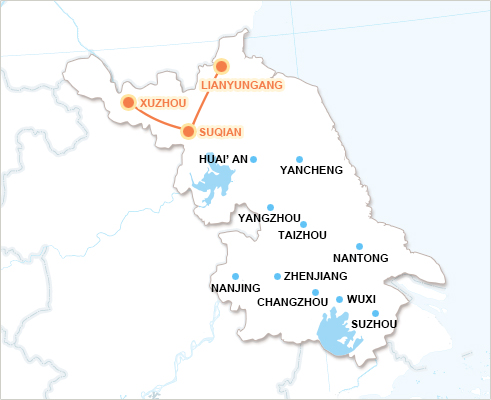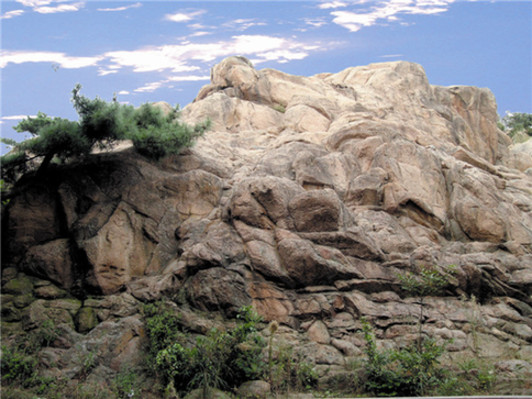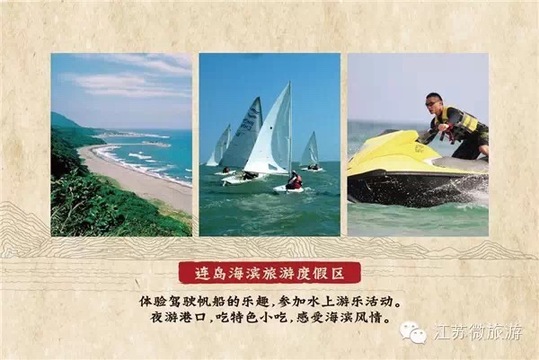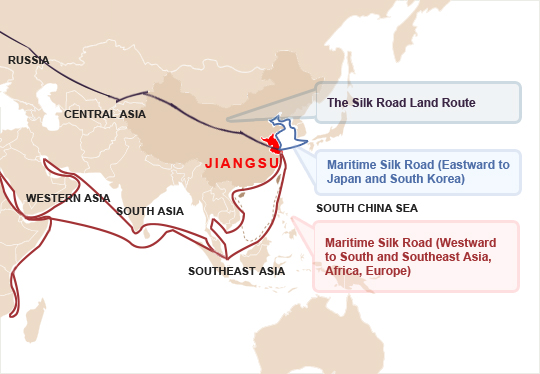| I: Four-day tour in Lianyungang, Suqian and Xuzhou |
 |
During the four-day tour, you can enjoy the culture heritage dating back to Qin and Han Dynasties when a town in Jiangsu started to serve as ancient China's port opening to the outside world. There you can also enjoy the breeze while strolling on the sands and experience the view atop a hill Confucius climbed over 2,000 years ago to overlook the sea.
Day 1: You’ll start the trip from Kongwang Hill, the departure point of the ancient maritime Silk Road, in Lianyungang city and enjoy the stone carvings on cliffs. After lunch you'll head to the Liandao Resort for seashore activities and later have a taste of local specialties on cruise ships.
 |
|
The Buddhist carvings on the cliffs of Kongwang Hill, Lianyungang, Jiangsu province. Located about 2 km away from downtown Lianyungang, the Kongwang Hill got its name after great ancient Chinese philosopher Confucius, Kongzi in Chinese. He was said to have once climbed the hill rocks to look over the sea centuries ago. Kong refers to his name Kongzi, and "wang" means "looking over". Archeological excavations yielded 105 Buddhist carvings on the cliffs of Kongwang Hill, which were finished around AD 170 during the Eastern Han Dynasty, nearly 200 years earlier than the Buddhist carvings at the Mogao Grottoes in Dunhuang county in Gansu province. The Buddhist carvings on the cliffs of Kongwang Hill are witnesses to and traces of the eastward spreading of Buddhism through the ancient Silk Road in China. [Photo/jstour.com] |
 |
|
You can sail or do watersports on the sea, take a walk along the seaside and enjoy seafood at the Liandao Island Seashore Tourism Resort of Lianyungang. [Photo/provided to chinadaily.com.cn] |
 |
|
The ancient Silk Road was the trade and cultural crossroads that connected China, India, Mesopotamia, Egypt, ancient Greece and Rome in history. The Silk Road has derived its name from the Chinese silk trade that first began and flourished during the Han Dynasty (206BC-AD220). As a main silk production area, Jiangsu province has been closely connected with the ancient Silk Road throughout history. Nanjing, the capital of Jiangsu province, was the departure point for Chinese navigator Zheng He's seven epic voyages across the Indian Ocean. Suzhou is known as the "capital of silk" due to its high-quality silk. Yangzi Jin in Yangzhou, an intersection point of the Yangtze River and the Grand Canal, used to be the convergence point of the land and maritime routes of the Silk Road in Tang Dynasty. |